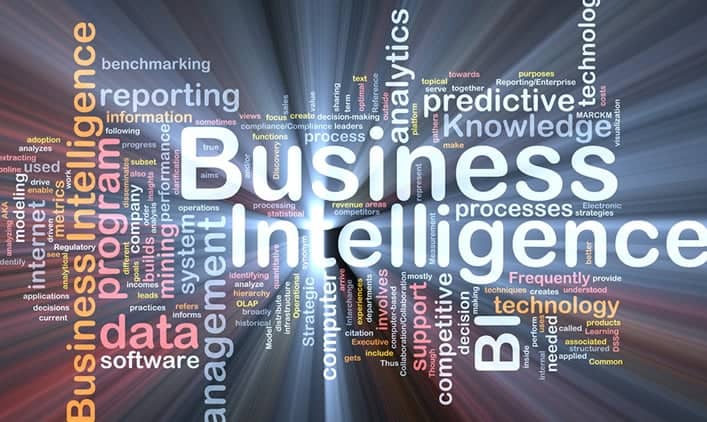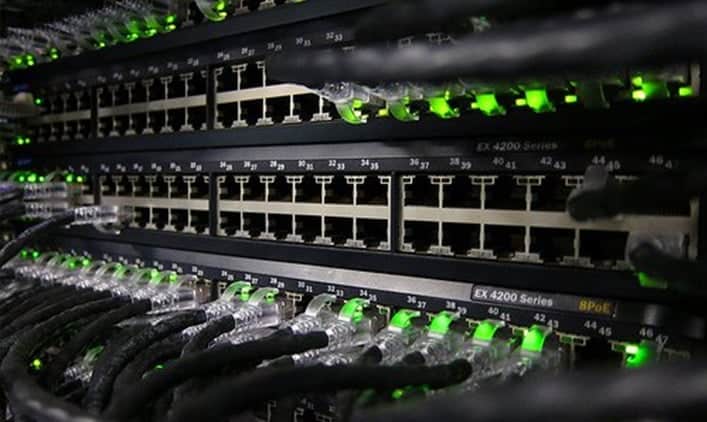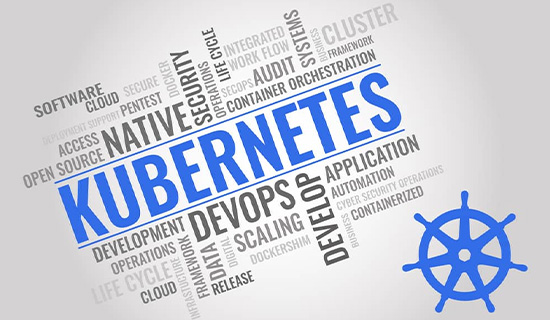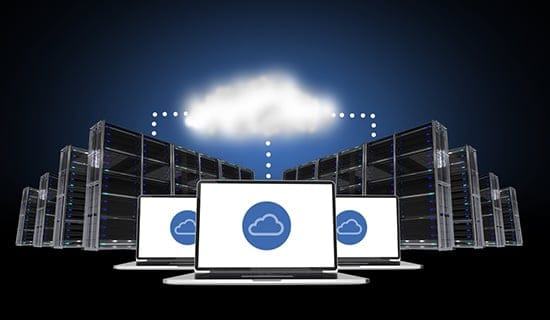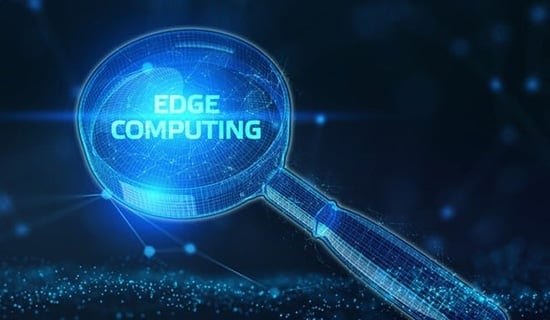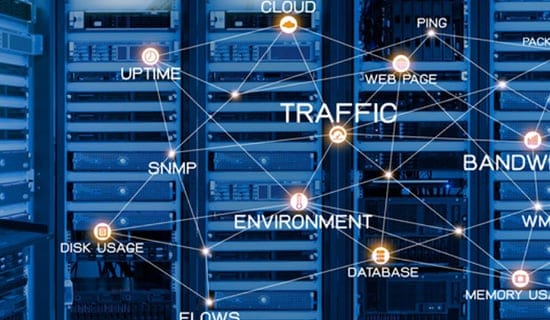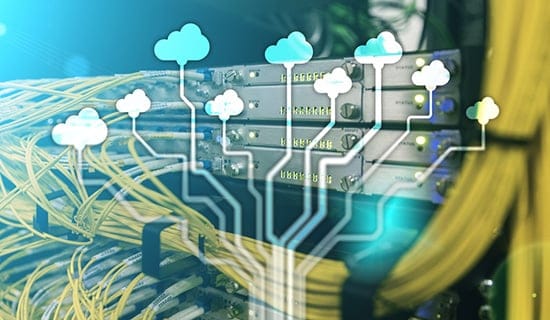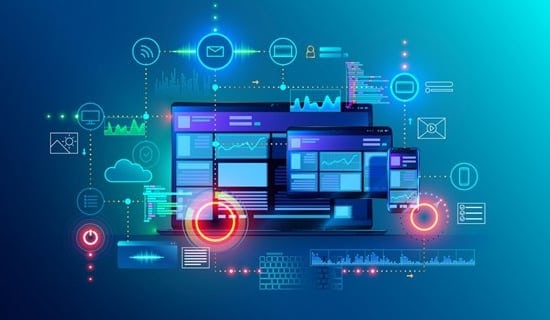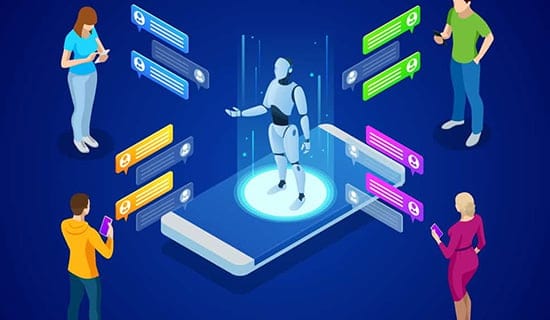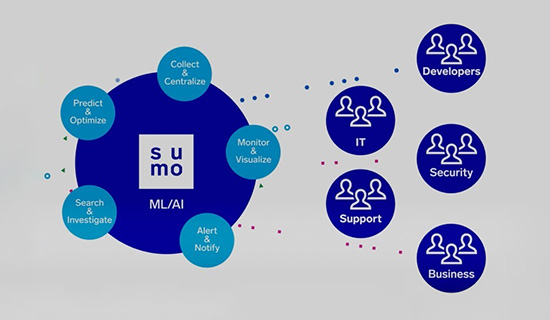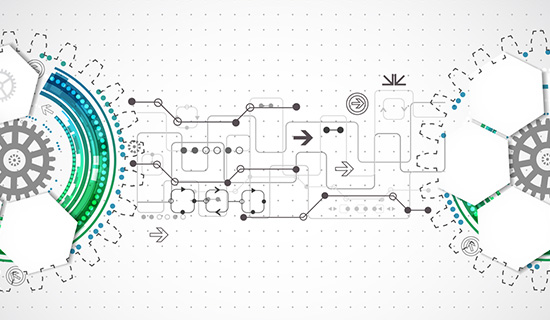Continuous Intelligence: Sponsored by Sumo Logic
Digital transformation requires continuous intelligence (CI). Today’s digital businesses are leveraging this new category of software which includes real-time analytics and insights from a single, cloud-native platform across multiple use cases to speed decision-making, and drive world-class customer experiences.
Continuous Intelligence in the Real World
Nearly every company in every industry has unique challenges and drivers around how to use data effectively to drive their business.
Log4j, Like COVID, is Endemic and Still Requires Attention
Observability is needed to help identify where Log4j is used and minimize any potential impact it may have until the software component is updated.
Legacy Systems Hindering Unified Observability Rollout
Organizations see the value in unified observability, but there are still several barriers preventing a business from attaining the full value of its data.
Overcoming Digital Transformation, Reliability, and Security Issues with Continuous Intelligence
Advice for developing a continuous intelligence strategy to support digital transformation, reliability, and security efforts.
Solving for Sovereign Data with Edge AI
Global hybrid cloud infrastructures make it all the much harder to protect data. Organizations are looking to AI-based approaches that give them insights to support data sovereignty.
Why Digital Transformation Drives the Need for AIOps
Due to the complexity of modern apps, the industry is undergoing a shift away from separate network and application monitoring tools towards AIOps.
Manual Security Operations Slowing Down Data Initiatives
Data-driven businesses are having to slow down new data initiatives, due to manual governance and security operations required to hold sensitive data.
Open Source Talent Shortage Expected To Increase in 2022
A shortage of developers can lead to more reuse of components, which often are not vetted or updated. That can introduce hidden vulnerabilities into applications that are hard to detect with traditional monitoring tools.
SOAR Stands Alone Even When Integrated With Other Apps
The addition of new features is moving SOAR from supporting security operations centers to broader operational use cases including ITOps to DevOps.
Businesses Favor Security Solutions From Innovators
Businesses are more likely to purchase security solutions from vendors that prioritize innovation and sell leading-edge solutions.
Open Source Security Ubiquity May Be Its Undoing
Software developers today have their own supply chains, assembling code by patching together existing open-source components with their unique code. While this leads to increased productivity and innovation, it has also created significant security concerns.
Using Continuous Intelligence to Address Cloud-Native App Security Challenges
Security solutions that use continuous intelligence can derive real-time insights into cloud-native app security threats.
Researchers Find 380,000 Open Kubernetes Servers
A recent research study found the vast majority of Kubernetes API servers (380,000) to be open to the internet. That makes cloud security all the more challenging, requiring better monitoring, observability, and insights into the interdependencies within cloud-native applications.
AWS Serverless Vulnerability Identified For First Time
The first publicly-known vulnerability attacking serverless computing platform AWS Lambda has been found.
Systems are Too Complex for Traditional Observability
Observability must encompass the different systems that comprise modern applications, rather than a single system like in the early days.
Observability and Software Supply Chain Security
Observability can help identify where software with newly found vulnerabilities is used based on how it performs and interacts within a larger system.
2021 Cybersecurity Report IDs Top 15 Vulnerabilities
Many top vulnerabilities are in software libraries that have been used for years. Observability offers a better way (vs. traditional security approaches) to find and protect against them.
Understanding Continuous Intelligence and Its Role in Security
RTInsights editor Joe McKendrick and Sumo Logic CTO and Co-Founder Christian Beedgen discuss the changing requirements for security in the age of digital transformation.
State of Cyber Assets Report Still Finds Vulnerabilities
Cloud-native security tools could provide the type of support teams need to stay on top of security threats, respond faster, and monitor more efficiently.
Improved Service Delivery Drives AIOps Use in Government
The path to AIOps in many states and in federal agencies is often guided by an AI Center of Excellence that develops best practices and captures internal knowledge.
2022 Cloud Computing Cybersecurity Threats and Trends
Cybersecurity must become as flexible as the architecture itself to help companies pivot quickly and respond even faster. Continuous intelligence can help.
Edge Applications Bring New App Performance Challenges
Modern observability solutions provide visibility into the workings of complex edge applications and help staff make data-driven decisions when investigating latency issues.
Understanding Continuous Intelligence and Its Role in Reliability
RTInsights editor Joe McKendrick and Sumo Logic CTO and Co-Founder Christian Beedgen discuss the changing requirements for meeting the availability and reliability requirements of today’s demanding users and customers.
Goodbye, Conventional IT Monitoring. Hello, Continuous Intelligence
Continuous Intelligence platforms leveraging multiple data sources can surface performance issues immediately, whenever they emerge.
Real-Time Insights Used for Continuous Product Improvement
Grammarly uses continuous intelligence and real-time insights to improve security and feature delivery time.
Learning to Trust in the Black Box with Observability
If your organization spends more time scratching its collective head about data quality or operational issues than it does asking unique and interesting questions, then you’re not just wasting time, you’re actively eroding your company’s future.
Data Center Specialization May Be Factor In Slow Crisis Response
The specialization of many data center job fields may be slowing down the response time in crisis, especially in cases with poor team communication.
Understanding Continuous Intelligence and Its Role in Digital Transformation
RTInsights editor Joe McKendrick and Sumo Logic CTO and Co-Founder Christian Beedgen offer advice for developing a continuous intelligence strategy to support digital transformation efforts.
Critical RCE Vulnerability Reminiscent of Log4j Issues
Modern observability is needed to help organizations find if and where they are using software with recently discovered vulnerabilities.
Why Continuous Intelligence is Essential for Modern Security Operations
Tasks previously performed by the security staff, such as vulnerability scanning, log analysis, and ticket checking, can now be automatically executed by a CI-based platform.
SiEM: A Complementary Approach to Addressing DDoS
SiEMs are increasingly playing a role in identifying precursors to DDoS attacks and in helping mitigate the root causes of those attacks.
Can SOAR Re-humanize the Security Operations Center?
Turning security threats into proactive protection for the long haul requires an engaged security operations center staff.
Cyber Insurance Business Is Becoming Unviable
The rise in costly cyber attacks, especially those involving ransomware, is stressing the cyber insurance industry and leading companies to invest in more sophisticated security solutions.
Ransomware Hackers Turn Aim To Midmarket Targets
The need for sophisticated security for companies of all sizes is growing as ransomware hackers are setting their sights down market this year.
Managing the Degrees of App Performance Outages
Note all outages are the same. Given that most organizations do not have unlimited IT resources, the severity of an outage to the business must somehow be quantified.
Linux Multi-Cloud Ransomware Attacks Expected to Increase
Ransomware attacks on Linux-based multi-cloud environments are increasing in both volume and sophistication.
Understanding Continuous Intelligence and Its Need in the Modern World
Joe McKendrick, RTInsights Industry Insights Editor, and David Linthicum, Managing Director and Chief Cloud Strategy Officer at Deloitte, discuss the increased need for continuous intelligence in today’s tech-ladened modern world.
Deep Fakes Will Change Cybersecurity Forever
Thanks to greater access to technology like AI and blockchain, organizations may be able to fight deep fake threats and reduce this risk in the coming years.
What Makes Cloud Observability Critical and Different?
Cloud observability delivers data insights to keep a cloud application or service running and it offers a way to better understand entire cloud systems.
Cloud Adoption Trends of 2021 Amplify in 2022
The move to cloud accelerated during the pandemic persists, introducing management challenges as the complexity of multi-cloud environments increases.
Enterprise Cloud Trends Point to Longevity
Enterprise cloud migrations and the continued increased use of cloud intros new performance monitoring and management demands.
Understanding Continuous Intelligence and Its Importance in Security
RTInsights editors Joe McKendrick, Lisa Damast, and Salvatore Salamone discuss why continuous intelligence is needed to address today’s evolving cyberattacks.
Opening Your Cloud-Native Metrics With OpenMetrics and OpenTelemetry
DevOps and SRE professionals love the idea of the “democratization” of observability via collectively-maintained projects like OpenMetrics and OpenTelemetry.
As the Role of the SRE Evolves, so Too Do Required Skills
The position of modern SRE is relatively new. Training courses and certifications offer a way to attain the needed skills.
4 Industrial Metaverse Trends: Hyperbole or Revolution?
Can an industrial metaverse supplement the digital transformation manufacturers are already going through?
Digital Complexity and How to Address It
Helen Beal, industry analyst, and Bruno Kurtic, Founding VP of Strategy and Solutions at Sumo Logic, discuss the need to use robust analytics to gain insights, simplify operations, and cut through the complexities.
Flexibility and Scale Foremost in Cloud SIEM
Cloud security and information management (SIEM) provides companies with options no matter where they are on the digital transformation scale.
Gaming Trends to Watch for in 2022
As the gaming industry moves to cloud and incorporates more technologies in 2022, complexity will grow making it harder for those responsible for maintaining availability and resolving problems.
Are Your Management Capabilities Keeping Pace with Edge?
Edge, like many other complex applications and systems, needs more than traditional monitoring and performance management tools.
Continuous Intelligence and the Customer Experience
Businesses need a view into complex digital systems. One option being considered is a solution that provides greater observability based on continuous intelligence.
Podcast: Understanding Continuous Intelligence and Its Importance in Complex Systems
RTInsights editors Joe McKendrick, Lisa Damast, and Sal Salamone discuss why continuous intelligence is needed to address the complexity of modern applications and operations.
Pursue Monitoring, but Don’t Forget Observability
Monitoring and observability collect information and provide visibility into what’s happening. Observability, however, ensures a rapid, accurate response where manual methods may delay a fix.
Five Biggest Cybersecurity Trends in 2022
The best way to protect organizations is to learn from last year’s cybersecurity problems and guard against the newest techniques hackers are expected to employ this year.
Customer Impatience Drives App Performance Requirements
Many businesses are considering the use of observability based on continuous intelligence to help improve the availability and performance of their applications and services.
Observability: The Key Ingredient in Digital Transformation
Observability helps digitally transformed organizations make data-driven decisions that reduce operational and security issues as quickly as possible.
New Technology Brings Organizational Challenges
For all their promise, today’s new data-driven technologies present organizational challenges to implementers.
Monitoring or Observability? Why Not Both?
Pairing monitoring and observability is beneficial because not all problems identified by monitoring tools require sophisticated investigation.
Log4j Vulnerability Highlights the Need for Observability
Observability can help identify where Log4j is used and minimize any potential impact it may have until the software component is updated.
IT Predictions Center on Observability, OpenTelemetry
The year 2022 will bring growing acceptance of OpenTelemetry for observability and a new focus on developers and customer experiences.
Why Observability is Needed in Cloud Migrations
A cloud migration can benefit from an observability solution that includes multi-cloud monitoring and application observability, as well as high scalability.
AWS Strengthens its AI and Machine Learning Offerings
In addition to Amazon’s announcements, Sumo Logic announced four new Sumo Logic AWS Quick Start integrations and expanded tracing visibility into AWS Lambda functions.
AI: Find the Right Use for Artificial Intelligence
As companies seek ways to use artificial intelligence they will find AI is best applied to tasks that humans can’t do as well or don’t want to do at all.
Next Up on the Network Security Hype Cycle: CAASM
Companies must address security weaknesses in their networked applications as well as non-IT-controlled ones, and CAASM may finally provide a solution.
Rapid Cloud Adoption Requires SOAR-based Cyber Security
Today’s complex application development and deployment environments based on cloud need SOAR (security orchestration, automation, and response) technologies to define incident analysis and response procedures.
The Future is Enterprise-Wide Intelligence
Success with enterprise intelligence requires a mix of technology, educational and cultural inititiatives across the organization.
Observability Versus Traditional APM
Observability aims to proactively provide full visibility into the source of known and unknown problems in any type of environment.
IT Operations Primed for Continuous Intelligence
IT operations in the enterprise is among the areas where continuous intelligences can provide near-term benefits.
The Automation-Human Balance Takes Shape in Security
An Airbnb security expert outlines how automation, AI and machine learning can support a security strategy, and where humans play a role.
SIEM No Longer Optional For Government Entities
SIEM offers real-time analysis of security alerts and aggregates activity across an entire network, making it an obvious solution for government departments.
How Continuous Intelligence Abates Security Staffing Issues
Automation via a continuous intelligence-based security solution is one of the most effective ways to nullify the negative effect of the skills gap, avoid burnout, and help address understaffing as positions go unfilled.
The Increasing Relevance of Continuous Intelligence in a Covid-19 Era
Study reveals most cloud mature digital companies are seriously considering the benefits of continuous intelligence (CI) and are enthusiastic about accelerating their rollouts at a high rate.
Gaming COVID Boost Makes Continuous Intelligence Critical
Gaming companies need continuous intelligence to address the same user experience, app performance, and security issues as enterprises.
Sumo Logic Expands Continuous Intelligence Capabilities
Attendees to the Sumo Logic Illuminate user conference got an overview of new continuous intelligence offerings that are now part of the company’s platform.
Understanding Continuous Intelligence with Juji CEO Michelle Zhou
In this RTInsights Real-Time Talk podcast, RTInsights editor Joe McKendrick talks with Michelle Zhou, co-founder and CEO of Juji.
Reliability is the Backbone of Digital Business
As companies become more reliant on software to drive revenue, reliability will be the backbone needed to become a digital-first business.
Enterprises Set Deadlines for Intelligent Systems
A five-year timeframe for shifting to intelligent systems may be tighter than it first seems.
7 Steps to Automate Cybersecurity Using SOAR
SOAR works because it effectively delegates responses to security threats based on the type of event and the necessary intervention level.
Continuous Intelligence Needed to Parry New Cyber Threats
Continuous intelligence can offer a unified view of many diverse security systems. And it helps to bring some level of simplicity to the complexity that continually grows in organizations today.
Add Intelligence to the Customer Experience
Enterprises have new opportunities to use emerging technology concepts like continuous intelligence to improve their customer experiences.
Why the Gaming Industry Needs Continuous Intelligence
As gaming companies struggle to balance security, user experience, and performance, continuous intelligence could be the path forward.
Cybersecurity Must SOAR to Address Today’s Threats
SOAR’s biggest strength is its ability to apply automation to security operations, freeing up analysts’ time from menial tasks to focus on more strategic initiatives.
Why Application Modernization Makes Sense
The benefits from application modernization extend far beyond efficiency and security to ease of management and better uptime.
Combating Savvy Cyber Attacks with a Data-Driven Response
Businesses need a data-driven approach that derives real-time threat insights from streaming data to fight modern cyber attacks.
The Need for Continuous Intelligence in Higher Ed
Because of the more open and dynamic nature of universities and colleges, the need for CI is even greater than that of some businesses.
Continuous Intelligence and the Automation Spectrum
Continuous intelligence used in decision support or decision automation has the potential to deliver significant benefits to organizations that need to react in the moment to dynamic situations.
Your Telemetry Data is Faster, Is Your Analysis?
Continuous intelligence (CI) platforms can be used to collect telemetry data from various sources, perform analysis on that data, make inferences about the data, and provide real-time insights that help businesses understand what’s going on.
Podcast: Understanding Continuous Intelligence
RTInsights editors Joe McKendrick, Jim Connolly, Lisa Damast, and Sal Salamone discuss continuous intelligence (CI). What is it? Why is it getting so much attention now?
How CI Tightens Enterprise Data Security
With data security becoming ever-more challenging, continuous intelligence can offer hope to the enterprise.
The Continuous Intelligence Report
Get the premiere industry report that quantitatively defines the state of the modern application stack and the shift in technology used by enterprises adopting Cloud and DevSecOps.
Solving the SOC Bottleneck: Automated Detection and Analytics
Running an effective security operations center (SOC) is at the heart of an enterprise’s strong cyber defense.
Day in the Life with Sumo Logic Cloud SIEM
Quick overview on Sumo Logic’s Cloud SIEM solution and how our scalable cloud-native platform helps SOC teams address multiple security use cases, including automatic detection and correlation for the threats that matter most.
Improve Data Lifecycle Efficiency with Automation
Organizations that look at data as they do any other critical corporate asset or resource will be the most successful.
Redefining Business Intelligence for Real-time Businesses
We are in the midst of an unprecedented convergence of events accelerating digital transformation.
Continuous Intelligence Platform Overview Demonstration
Sumo Logic delivers the first and only cloud-native, Continuous Intelligence Platform™ enabling companies to thrive in the Intelligence Economy.
Making the Most of Your Monitoring Tool Investment
Monitoring tools can be complemented with new solutions that leverage self-healing and autonomous operations.
Digital Transformation Requires Continuous Intelligence
Digital businesses are leveraging a new category of software, continuous intelligence (CI): real-time analytics and insights from a single, cloud-native platform across multiple use cases to speed decision-making, and drive world-class customer experiences.
Using Tech to Crack Down on Fraud in 2021
After a year of accelerated digital transformation and movement to the cloud, there are no more excuses not to be adopting cloud technology for your fraud detection strategies.
Use Cases
Digital businesses are leveraging a new category of software, continuous intelligence: real-time analytics and insights from a single, cloud-native platform across multiple use cases to speed decision-making, and drive world-class customer experiences.
Kubernetes Monitoring
Native integrations and built-in monitoring, diagnostics, troubleshooting, and security dashboards with the Sumo Logic Kubernetes App.
Faster Application Monitoring, Diagnostics, and Troubleshooting
Reduce downtime and solve customer-impacting issues faster with an integrated observability platform for all of your application data.
Compliance and Security Solutions Brief
Proven machine learning analytics provide deep compliance, security and operational visibility across your hybrid environments.
The Origins of Observability
Whether or not you believe the hype, observability is all about how to ensure overall system health and deliver reliable customer experiences.
Cloud-native SIEM platforms
With the introduction of cloud computing, businesses quickly saw the value and opportunity to offload infrastructure investments and scale resources.
Additional Resources
Cloud Security Monitoring & Analytics
Stay ahead of your changing attack surface by surfacing deep security insights. Built in the cloud for the cloud, Sumo Logic alleviates the challenges of security monitoring for your cloud and multi-cloud infrastructure.
Going Beyond the Three Pillars of Observability
This session will look at how to guide your observability strategy based on what you want to achieve, what your users care about, and the data you need to achieve it.
Continuous Intelligence Emerges as Successor to Real-time Analytics
Continuous intelligence has entered the Business Intelligence (BI) and analytics lexicon.
Real-Time Data Analytics Requires More Than Data Scientists
Ultimately, real-time data analytics projects are most successful when they feature partnerships between the technology and business sides.
Data Scientists are Swamped; What Do We Do About It?
Companies that want deeper, richer insights from their data scientists must leverage their teams’ expertise with strategic tools designed to automate tasks that create bottlenecks.









